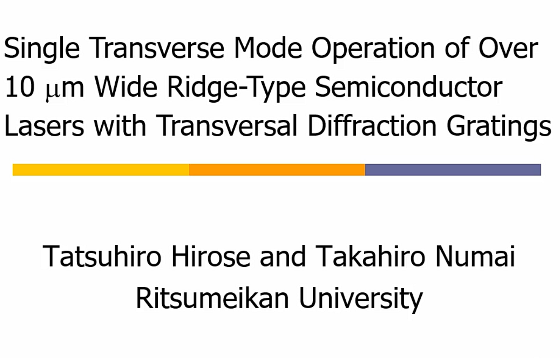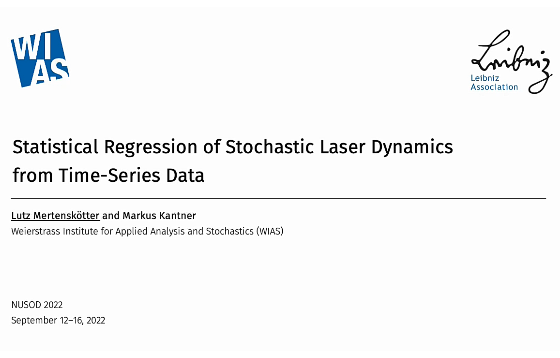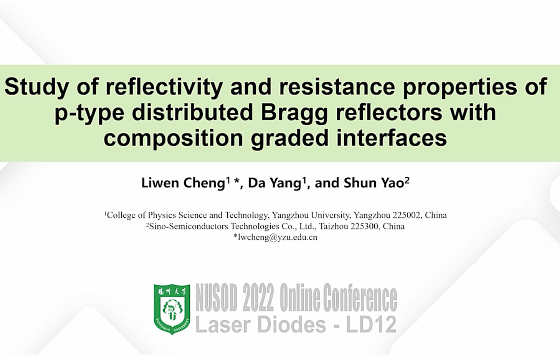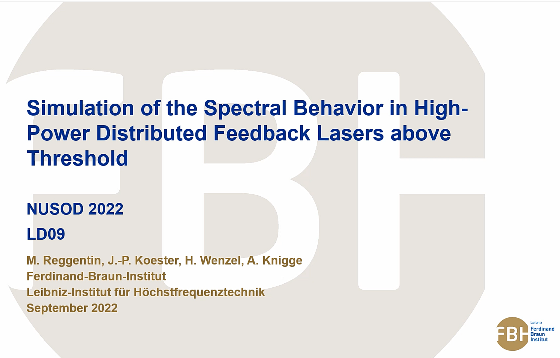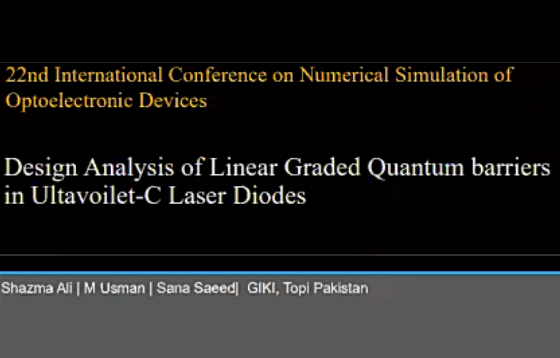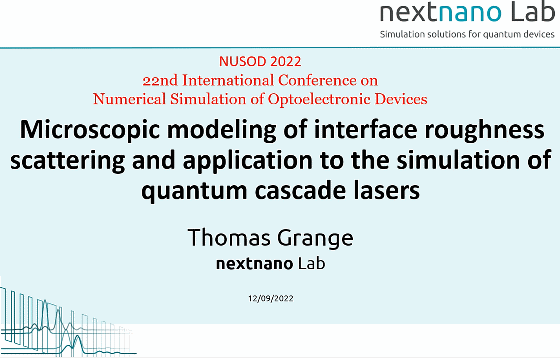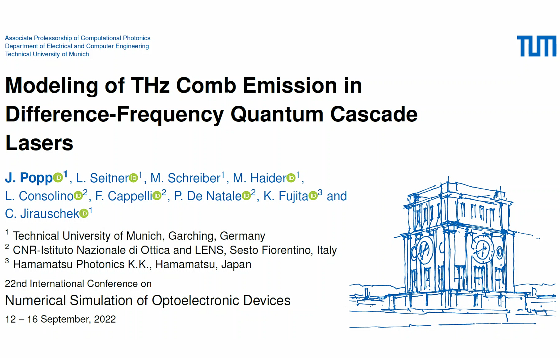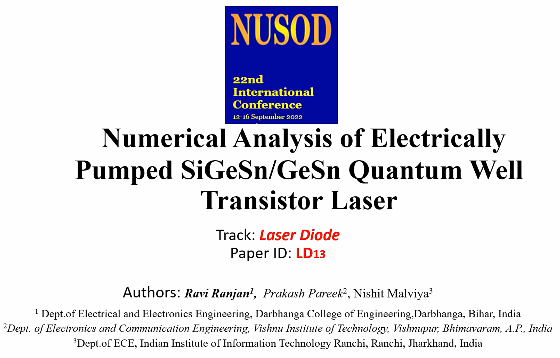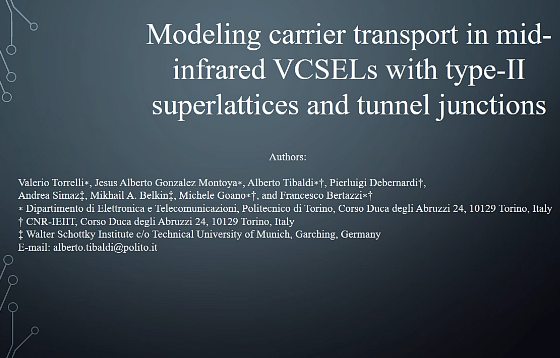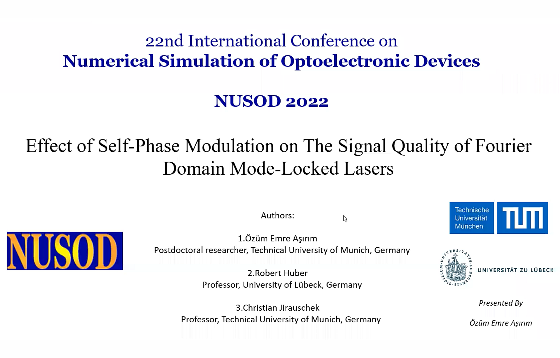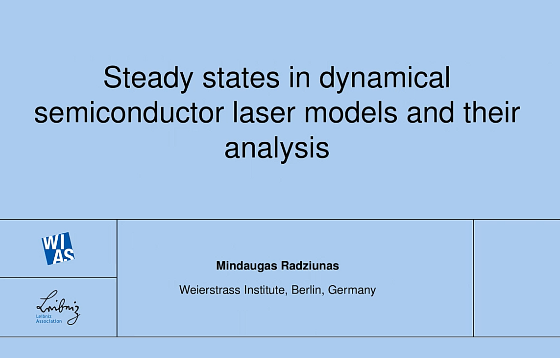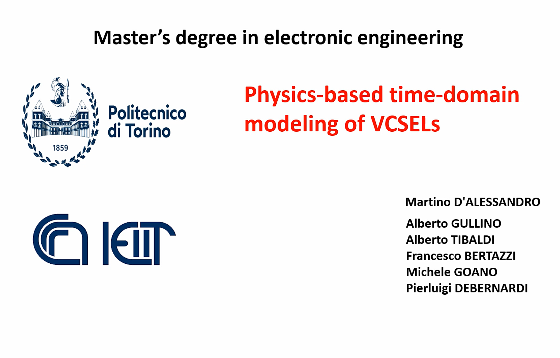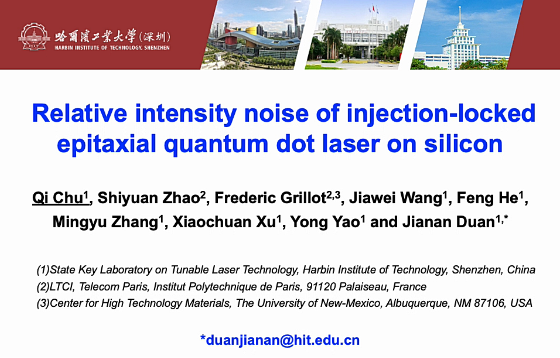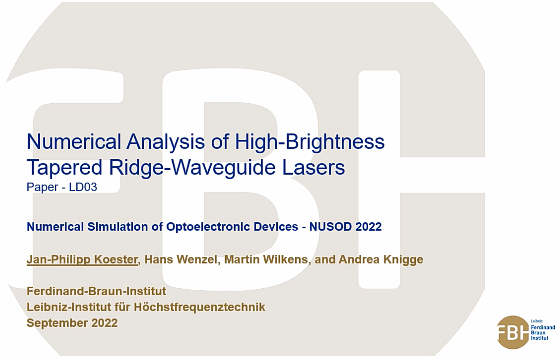Laser Diodes14 Posts



This paper reports on single transverse mode operation of a ridge-type semiconductor laser with transversal diffraction gratings for a mesa width over 10 µm when the number of periods is 160, the grating pitch is 428.7 nm, and the grating depth is 250 nm.
LD05 – Data-Driven Modeling of Non-Markovian Noise in Semiconductor Lasers
Non-Markovian noise degrades the coherence properties of semiconductor lasers and contributes significantly to broadening of the linewidth. Since modeling of such colored noise systems from first principles is not accessible, we aim for a data-driven modeling approach in which a system of stochastic rate equations shall be reconstructed from time series data.
LD12 – Study of reflectivity and resistance properties of p-type distributed Bragg reflectors with composition graded interfaces
In this work, the reflectivity and series resistance of the p-type distributed Bragg reflectors (DBRs) in vertical cavity surface emitting lasers (VCSELs) under the different thickness of composition graded interface layers, Al composition of the high Al composition layers, Al composition of the low Al composition layers, and the number of DBR periods are simulated […]
LD09 – Simulation of the Spectral Behavior in High-Power Distributed Feedback Lasers above Threshold
We report on the simulations of mode hopping behavior in semiconductor distributed feedback lasers with asymmetric facet reflectivities above threshold and its dependence on the phase between the grating and the high reflective facet.
LD15 – Design Analysis of Linear Graded Quantum barriers in Ultravoilet-C Laser Diodes
We demonstrated ultraviolet laser diode with improved optical and electrical features. By employing linear graded rising aluminium concentration in phases from first quantum barrier to last quantum barrier, the suggested LD design improves internal quantum efficiency (IQE) and output power while minimizing the lasing threshold. The proposed LD increases optical gain while lowering carrier leakage […]
LD02 – Microscopic modeling of interface roughness scattering and application to the simulation of quantum cascade lasers
The theory of interface roughness (IFR) scattering in semiconductor heterostructures is well established in the case of idealized abrupt interfaces. However, in reality, interfaces have a finite width, i.e. interfaces are graded. In such case, the effect of interface roughness, i.e. the breaking of in-plane invariance, a general framework has been lacking to describe the […]
LD08 – Modeling of THz Comb Emission in Difference-Frequency Quantum Cascade Lasers
The generation of terahertz (THz) frequency comb emission by intracavity difference frequency generation (DFG) in a mid-infrared (mid-IR) quantum cascade laser (QCL) is a promising alternative to direct THz QCL frequency comb generation. Concerning their room temperature operation capabilities, these devices are well suited for applications in rotational molecular spectroscopy and sensing. In order to […]
LD13 – Numerical Analysis of Electrically Pumped SiGeSn/GeSn Quantum Well Transistor Laser
The threshold current density of electrically pumped Sn incorporated group IV alloy based transistor laser (TL) is analyzed by proposing and designing a theoretical model for the same. Active region for the lasing action is formed by strain compensated GeSn single quantum well (QW) in the base of the transistor. The threshold current density for […]
LD04 – Modeling carrier transport in mid-infrared VCSELs with type-II superlattices and tunnel junctions
Vertical-cavity surface-emitting lasers are promising light sources for sensing and spectroscopy applications in the midinfrared 3 ÷4 µm spectral region. A type-II superlattice active region is used for carrier injection and confinement, while a buried tunnel junction defines a current aperture, decreasing the series resistivity. Highly nanostructured to optimize device performance, mid-infrared VCSELs pose modeling […]
LD10 – Effect of Self-Phase Modulation on The Signal Quality of Fourier Domain Mode-Locked Lasers
In this paper, the impact of self-phase modulation on the noise performance of Fourier Domain Mode-Locked (FDML) lasers is investigated. It is shown that under a relatively high fiber nonlinearity and/or intracavity signal amplitude, an excess amount of noise generation occurs, which can not only lead to poor signal quality, but also operational instability. Hence, […]
LD01 – Steady states in dynamical semiconductor laser models and their analysis
We present an algorithm for calculating steady states in the dynamic PDE model for SLs admitting gain compression, spatial hole burning, and multilevel carrier rate equations. Presented example simulations rely on 1(time)+1(space)-dimensional traveling-wave- and Lang-Kobayashi-type models.
LD07 – Physics-based time-domain modeling of VCSELs
This paper presents the results of a physics-based time-domain simulator for a vertical-cavity surface-emitting laser (VCSEL). We implemented a trapezoidal rule second order backward differentiation formula (TR-BDF2) to simulate the large signal response of the device under investigation, including the parasitic effects of the pin junction arising from an interplay of optical and carrier transport […]
LD06 – Relative intensity noise of injection-locked epitaxial quantum dot laser on silicon
This work investigates the relative intensity noise (RIN) characteristics of quantum dot (QD) lasers epitaxially grown on silicon subject to the optical injection. The effect of threading dislocation (TD), which acts as nonradiative recombination centers in the Shockley-Read-Hall (SRH) process, is considered in the rate equation model. The results reveal that the RIN is enhanced […]
LD03 – Numerical Analysis of High-Brightness Tapered Ridge-Waveguide Lasers
In this work, we present a simulation-based analysis of a CW driven tapered ridge-waveguide laser having a high lateral brightness of 5 W · mm−1mrad−1 at 2.5 W optical output power.

